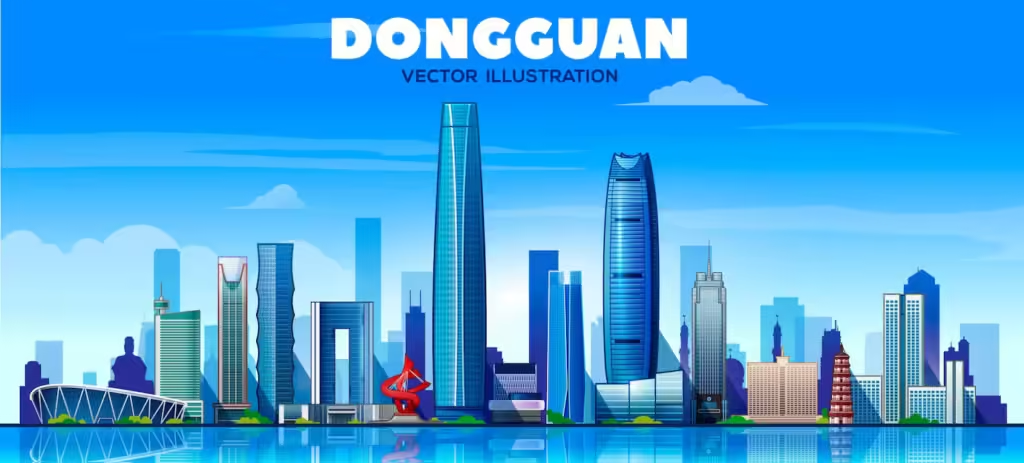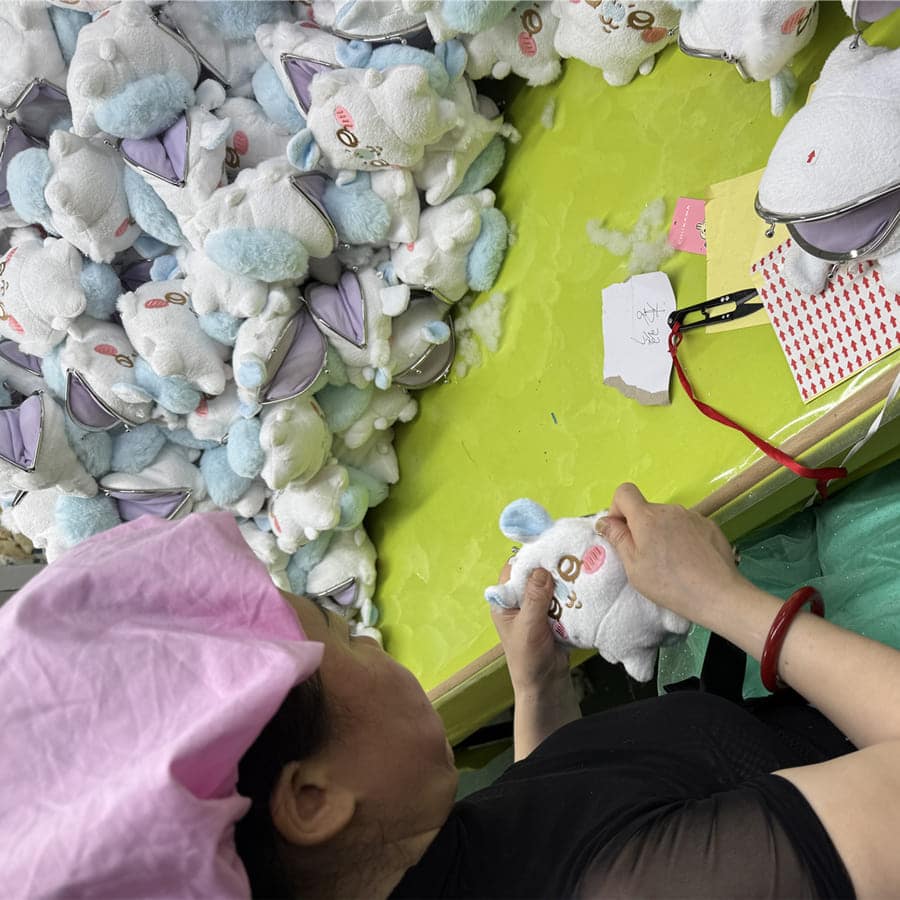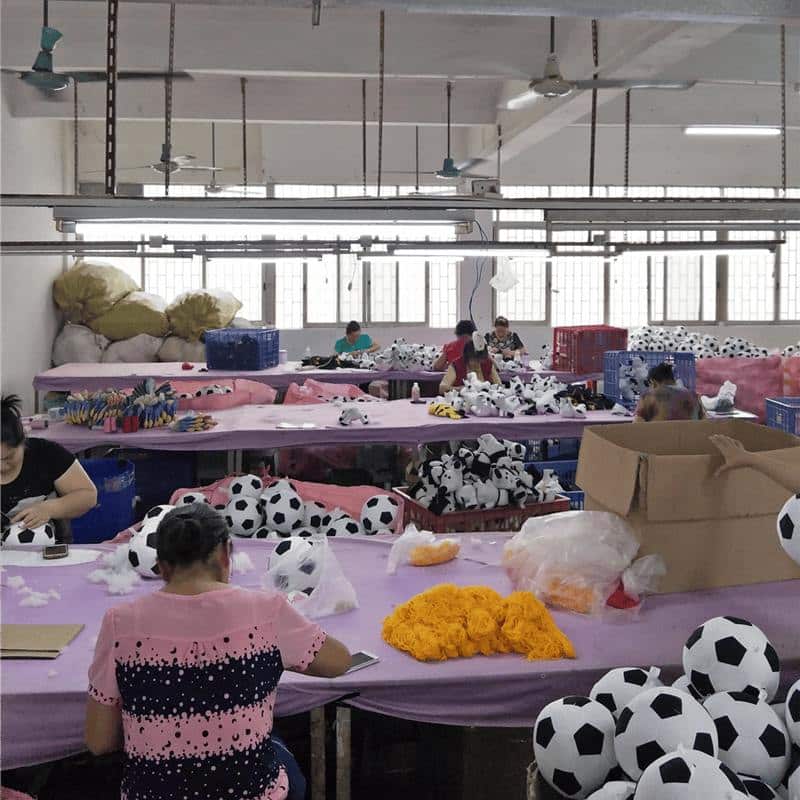
Discovering where stuffed animals are predominantly manufactured can provide crucial insights into the global toy industry. At AokumaToy, we understand the importance of identifying key production locations to enhance your business strategies. This article will explore major manufacturing hubs around the world, with a particular focus on Dongguan City, the earliest and most robust center for plush toy production. Learn why Dongguan remains a leading location for high-quality stuffed animal manufacturing and how other regions compare in this competitive industry.
Dongguan City in China is renowned as the primary hub for stuffed animal manufacturing. As a general rule, this region has built a strong reputation due to its well-established infrastructure, skilled labor force, and advanced manufacturing technology. The city’s factories produce a significant portion of the world’s plush toys, offering high-quality products and efficient production capabilities.
Curious about where other major plush toy production centers are located and how they compare to Dongguan City? Continue reading as we delve into the specifics of global manufacturing hubs. We’ll highlight why Dongguan remains a powerhouse in the industry and also explore emerging regions that are making their mark in stuffed animal production. This comprehensive guide will provide you with a deeper understanding of the global landscape, helping you make informed decisions about your manufacturing needs.
The Dominance of Dongguan City in Plush Toy Manufacturing
Dongguan City, located in Guangdong Province, China, has long been recognized as the leading hub for plush toy manufacturing. The city’s dominance in this industry is attributed to several key factors that make it an ideal location for large-scale production.
Established Infrastructure: Dongguan boasts a well-developed industrial infrastructure, including advanced manufacturing facilities, efficient logistics networks, and robust supply chains. This infrastructure supports high-volume production and ensures timely delivery of materials and finished products.

Skilled Labor Force: The region is home to a highly skilled and experienced labor force specializing in toy manufacturing. Workers in Dongguan have extensive knowledge of the intricate processes involved in creating high-quality stuffed animals, from sewing and embroidery to assembly and quality control.
Advanced Manufacturing Technology: Dongguan factories are equipped with state-of-the-art machinery and technology, enabling them to produce complex designs and maintain consistent quality. The use of modern equipment also enhances efficiency and reduces production costs.
Cost-Effective Production: Despite the high quality of the products, Dongguan’s manufacturing costs remain competitive. The combination of skilled labor, advanced technology, and efficient processes allows manufacturers to offer cost-effective solutions without compromising on quality.
Strong Industry Network: Dongguan has a dense concentration of toy manufacturers, suppliers, and related businesses. This network facilitates collaboration and innovation, allowing companies to stay ahead of market trends and continuously improve their products.
Government Support: The local government provides significant support to the toy manufacturing industry through favorable policies, incentives, and infrastructure investments. This support helps sustain Dongguan’s competitive edge and attracts new businesses to the region.
Global Reach: Products manufactured in Dongguan are exported worldwide, making the city a key player in the global plush toy market. Its strategic location near major ports ensures efficient shipping and distribution, further solidifying its position as a leading manufacturing hub.
Dongguan City’s comprehensive advantages make it the top choice for plush toy manufacturing, offering a perfect blend of quality, efficiency, and cost-effectiveness. This dominance has established Dongguan as a benchmark for other manufacturing regions striving to compete in the global market.
Emerging Manufacturing Hubs for Stuffed Animals
While Dongguan City remains the leader in plush toy manufacturing, other regions around the world are becoming increasingly important players in the industry. These emerging hubs offer unique advantages and are contributing to the global production landscape.
Vietnam: Over the past decade, Vietnam has emerged as a significant manufacturing center for plush toys. The country offers competitive labor costs, a growing skilled workforce, and a favorable business environment. Many companies have established factories in Vietnam to take advantage of these benefits, resulting in a steady increase in production capacity and export volumes.
Indonesia: Indonesia is another growing hub for stuffed animal production. The country’s manufacturing sector is expanding rapidly, supported by a large labor force and improving infrastructure. Indonesian factories are known for producing high-quality plush toys at competitive prices, making the country an attractive destination for toy manufacturers.
India: India has also entered the plush toy manufacturing scene, leveraging its vast workforce and cost advantages. The Indian government has introduced various initiatives to promote the manufacturing sector, including policies to attract foreign investment. This has led to the establishment of new factories and increased production capabilities.

Mexico: As a neighbor to the United States, Mexico offers strategic advantages for North American toy companies. The country provides cost-effective labor, proximity to major markets, and favorable trade agreements. These factors have contributed to Mexico’s growing role in the global plush toy manufacturing industry.
Turkey: Turkey’s plush toy manufacturing industry is gaining traction due to its skilled labor force and strategic location bridging Europe and Asia. Turkish manufacturers are known for their craftsmanship and ability to produce custom designs, catering to both regional and international markets.
Eastern Europe: Countries in Eastern Europe, such as Poland and Romania, are becoming increasingly popular for plush toy production. These regions offer a combination of skilled labor, modern manufacturing facilities, and access to the European market. Manufacturers in Eastern Europe are focusing on high-quality production and innovative designs to compete in the global market.
As these emerging hubs continue to develop, they provide alternative options for companies looking to diversify their production sources. Each region brings its own set of strengths, contributing to the dynamic and evolving landscape of the plush toy manufacturing industry.
Factors Influencing the Choice of Manufacturing Location
Several factors influence the choice of manufacturing location for stuffed animals, impacting production costs, quality, and efficiency. Understanding these factors helps businesses make informed decisions when selecting a manufacturing hub.
Labor Costs: One of the most significant factors is labor cost. Countries with lower labor costs, such as Vietnam and Indonesia, are attractive for manufacturers looking to reduce expenses. However, it’s essential to balance cost with the skill level and productivity of the workforce.
Infrastructure: The quality of infrastructure, including transportation networks, availability of raw materials, and technological advancements, plays a crucial role. Regions like Dongguan City benefit from well-established infrastructure, which supports efficient production and distribution processes.
Skilled Workforce: The availability of a skilled workforce is vital for maintaining high-quality production standards. Areas with a history of toy manufacturing, such as Dongguan, have a labor force experienced in the specific skills required for plush toy production.

Proximity to Markets: Manufacturing locations closer to major markets can reduce shipping times and costs. For instance, Mexico’s proximity to the United States makes it a strategic choice for North American companies, while Turkey’s location is advantageous for accessing both European and Asian markets.
Government Policies and Incentives: Government support through favorable policies, tax incentives, and infrastructure investment can make certain locations more attractive. Countries like India and Vietnam have introduced measures to encourage foreign investment in manufacturing.
Quality and Standards Compliance: Ensuring that manufacturing locations can meet international quality and safety standards is crucial. Regions with a robust regulatory framework and a reputation for high-quality production are often preferred by global brands.
Environmental Considerations: Increasingly, companies are considering the environmental impact of their manufacturing processes. Regions that offer sustainable practices and eco-friendly manufacturing options are becoming more attractive to environmentally conscious businesses.
Cultural and Language Factors: Ease of communication and cultural compatibility can influence the choice of manufacturing location. Regions with a workforce that has a good command of the primary business language can facilitate smoother operations and reduce misunderstandings.
By evaluating these factors, companies can choose manufacturing locations that align with their strategic goals, ensuring a balance between cost, quality, and efficiency. This careful consideration is essential for maintaining competitiveness in the global plush toy market.
The Impact of Global Supply Chains on Plush Toy Manufacturing
The efficiency and reliability of global supply chains significantly impact plush toy manufacturing. Supply chain dynamics determine how quickly and cost-effectively materials and finished products can move from one point to another, influencing production timelines and overall costs.
Sourcing of Raw Materials: The availability and cost of raw materials, such as fabrics, stuffing, and accessories, are critical factors. Regions with easy access to these materials can lower production costs and reduce lead times. For example, Dongguan benefits from a well-developed network of suppliers for plush toy components.
Logistics and Transportation: Efficient logistics and transportation networks are essential for timely delivery of raw materials to factories and finished products to markets. Ports, highways, and airports that facilitate smooth and fast transportation contribute to the overall efficiency of the manufacturing process. Countries with advanced logistics infrastructure, like China, often have a competitive edge.
Trade Policies and Tariffs: International trade policies and tariffs can significantly affect the cost and feasibility of manufacturing in certain locations. Favorable trade agreements can reduce costs and simplify the import-export process, making regions like Mexico attractive due to its trade agreements with the United States and Canada.
Supply Chain Disruptions: Global events, such as natural disasters, political instability, or pandemics, can disrupt supply chains. Manufacturers must consider the resilience and reliability of supply chains in different regions. Diversifying suppliers and production locations can mitigate risks associated with supply chain disruptions.
Lead Times and Inventory Management: Effective supply chain management helps in maintaining optimal inventory levels and reducing lead times. Just-in-time (JIT) manufacturing strategies, where materials are ordered and received as needed, can reduce storage costs and improve cash flow. However, this requires a highly reliable supply chain.
Technology and Automation: The integration of technology and automation in supply chains enhances efficiency and accuracy. Advanced technologies such as RFID tracking, automated warehousing, and real-time data analytics help streamline operations and reduce errors. Regions investing in supply chain technology can offer significant advantages.
Sustainability and Ethical Considerations: Increasingly, companies are prioritizing sustainable and ethical supply chains. This includes sourcing eco-friendly materials, reducing carbon footprints, and ensuring fair labor practices. Regions that support sustainable supply chain practices are becoming more attractive to global brands.
Partnerships and Collaboration: Strong partnerships with suppliers, logistics providers, and other stakeholders are crucial for maintaining an efficient supply chain. Collaborative efforts can lead to innovations and improvements in supply chain processes, benefiting the entire production cycle.
Understanding and optimizing global supply chains is vital for plush toy manufacturers to remain competitive. By carefully considering these factors, companies can enhance their production efficiency, reduce costs, and ensure the timely delivery of high-quality products to the market.

